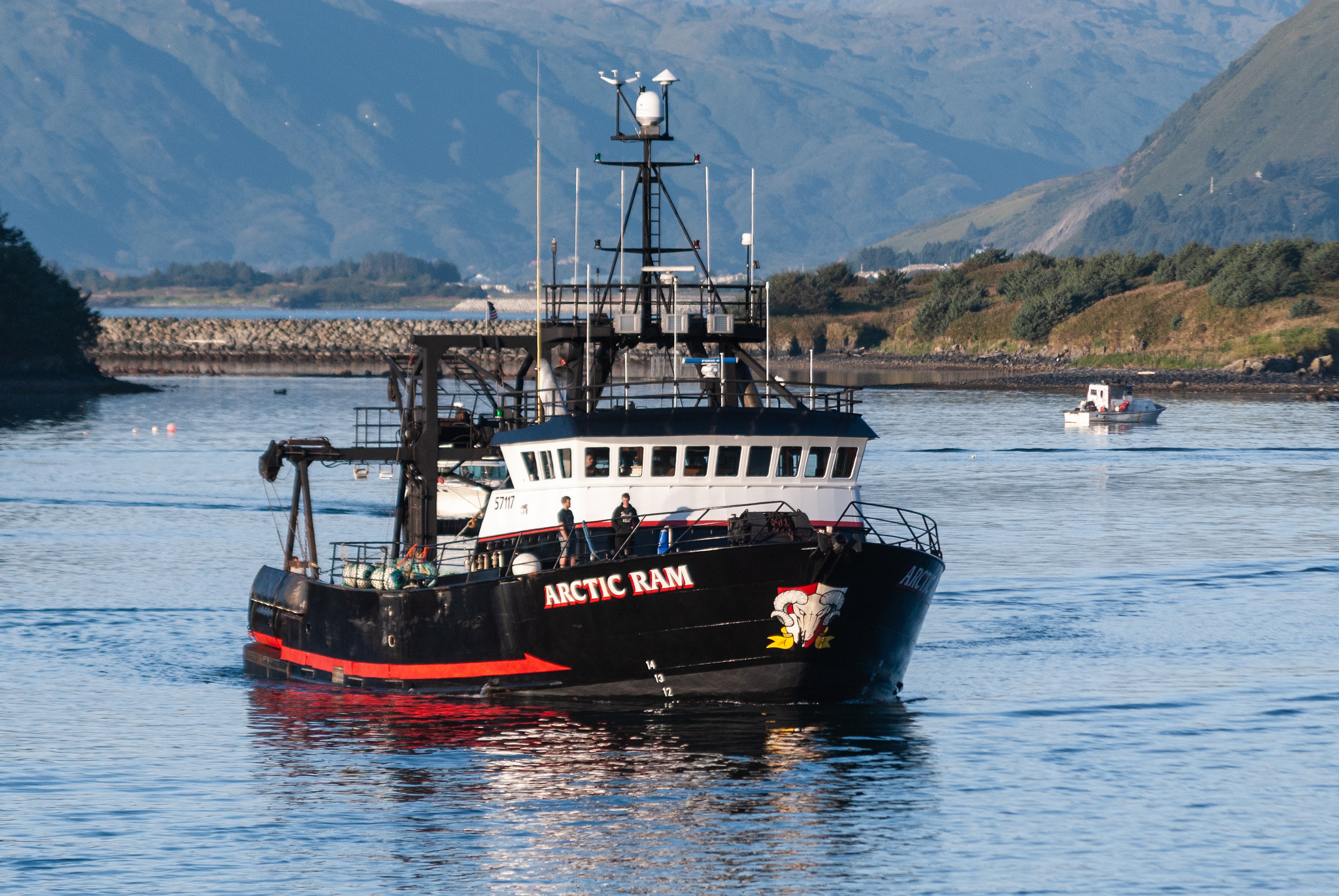Climate change will hit some of Alaska’s Bering Sea fisheries harder than others
Rockfish, flathead sole and Tanner crab are especially vulnerable. Pollock and Pacific cod are less so — for now.

As the Bering Sea warms and becomes more acidic, rockfish, flathead sole and Tanner crab are the most vulnerable to the changes, said an analysis completed by scientists with the National Oceanic and Atmospheric Administration. But commercially important pollock and Pacific cod, which are able to migrate to colder northern waters, are less vulnerable, at least for now, the study said.
The findings, detailed in a study published in the journal Global Change Biology, analyzed 36 stocks in the eastern Bering Sea and ranked them by climate-change sensitivity and vulnerability.
Factors analyzed included sea-surface temperature, temperatures at depth, salinity, ocean acidification and phytoplankton bloom timing.
[How an accelerated warming cycle in Alaska’s Bering Sea is creating ecological havoc]
The study did not address the specific commercial values of the fish stocks that were analyzed, but the authors and others at NOAA acknowledge the analyzed fish stocks have huge economic importance to Alaska and the United States. The Bering Sea and Aleutian Islands harvests in 2016 represent 58 percent of the nation’s commercial fish landings by volume and 29 percent of the nation’s commercial fish ex-vessel value, and the importance goes beyond dollars, Robert Foy, science and research director of NOAA Fisheries’ Alaska Fisheries Science Center, said in a statement.
“In the past few years water temperatures have been much warmer than average making the need for studies like this all the more imperative. Our science both in the field and in the lab is critical to monitor ecosystem changes and provide short-term and long-term forecasts to help commercial, recreational and subsistence communities anticipate and respond to changes that impact their way of life,” Foy said in the statement.
The fish stocks are ranked by sensitivity to climate change and vulnerability to that change.
The two qualities are different, though related, said Paul Spencer, a NOAA fisheries biologist and the lead author of the study.
“Sensitivity refers to the degree to which a stock would be affected by climate change. Exposure is the degree to which the stock would be exposed to climate change (i.e., changes in environmental or biological conditions),” he said in an email. “Vulnerability depends on both sensitivity and exposure. For example, a stock could be very sensitive to climate change but expected to have little exposure, or a stock could be exposed to climate change but have low sensitivity, and in either of these cases the vulnerability would be ranked as low.”
Those Bering Sea stocks that rank highest on the climate-change sensitivity scale have low population growth, limited spawning cycles and, in the case of crab, sensitivity to ocean acidification.
Pacific cod, pollock and giant Pacific octopus were ranked as having low sensitivity to climate change because their ability to move, their dispersal during key life stages and their relatively high population growth, the study said.
The study’s aim was to include representative stocks of the major groups of Bering Sea groundfish, salmon and crabs, Spencer said.
The information could be used in the Bering Sea Ecosystem Plan that federal fisheries regulators approved last December, he said.
There is evidence that boreal species are moving north as Bering Sea temperatures rise. Among the evidence is a new study, also by researchers from NOAA’s Alaska Fisheries Science Center, that find genetic ties of Pacific cod found in the northern Bering Sea in 2017 to Pacific cod found farther south in the Bering.
“Our study supports the hypothesis that climate change will extend the range for many subarctic species including Pacific cod,” said the study, published in the journal Evolutionary Applications.
Meanwhile, there are signs of problems in the Bering Sea Tanner crab population. Stocks are depressed, and the Alaska Department of Fish and Game on Oct. 6 canceled the 2020 harvest, a closure that followed a similar Bering Sea Tanner crab fishery cancelation for 2019.
“Estimated mature male biomass in the eastern and western Bering Sea areas are below thresholds required for fishery openings,” the department’s announcement said.
Some other Bering Sea crab stocks are also in weaker-than-normal conditions. The department also canceled 2020 harvests for blue king crab in waters near St. Matthew Island and blue and red king crab harvests in waters around the Pribilof Islands.
However, snow crab stocks appear to be in good shape and the department has been able to increase the harvest quotas.